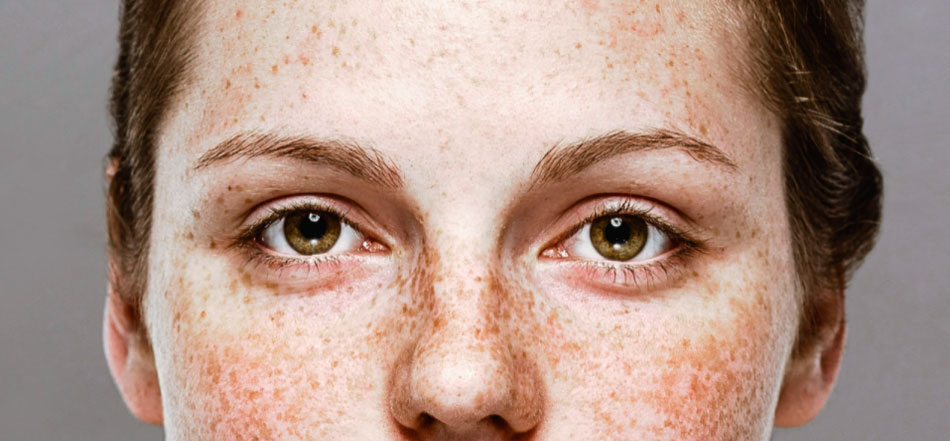
Spots: Unwanted Pigmentation
Have you heard of unwanted pigmentation? If not, you’ve likely seen it, as it refers to those skin spots that appear over the course of our lives due to various factors, bothering many who experience them.
Spots can arise from excessive sun exposure, environmental pollution, dietary habits, stress, alcohol and tobacco use. Other causes include pregnancy, changes in estrogen levels, and thyroid conditions.
The skin is the largest organ in our body, providing protection and playing a key role in our physical appearance. Skin spots affect women far more than men. After age 40, 90% of women notice the first signs. Skin is one of the primary indicators of aging. Over time, areas like the face, neck, chest, and hands become dotted with spots that age us and give the appearance of worn-out skin.
Types of Spots
Freckles: These are accumulations of pigment that appear as rounded, uneven patches on the skin. They pose no health risks.
Moles: They can range from brown to black, flat or raised. They result from excess pigmentation or blood vessel accumulation. They should be checked annually by a dermatologist. If they itch, burn, bleed, or suddenly change in color, size, or shape, consult a specialist.
Pregnancy-Related Spots: These occur due to hormonal changes during pregnancy, as well as from contraceptive use or hormone therapy during menopause. Sun exposure increases their likelihood.
Sun-Induced Spots: Larger and more irregular than freckles, these are common in older adults with frequent sun exposure.
Vitiligo: These appear as white patches, sometimes with a dark border. They result from a loss of skin pigmentation, with causes ranging from stress and thyroid issues to autoimmune reactions.
Melanoma: Malignant spots that may vary in appearance—brown, black, or tan, with irregular or undefined edges. They can be mistaken for moles but grow in size. Melanomas are the most severe form of skin cancer and must be removed promptly to prevent spreading.
Procedures to Remove Spots

To remove skin spots, we use the Q-Switched laser and Fractional Pixel CO2. This treatment is performed with topical anesthesia, followed by the laser application. The procedure involves about three days of cosmetic downtime. Treated areas will be red and inflamed for two to three days. Afterward, two hydrating masks are applied, combined with light-emitting diode therapy, which speeds up and enhances recovery.
Can Solar Freckles Be Removed?
Absolutely. Currently, Dr. Fernando Motta Mafla combines these highly effective lasers to completely eliminate freckles caused by the sun as well as congenital freckles. The results are very encouraging, revealing rejuvenated and healthy-looking skin.
Dr. Fernando Motta Mafla is a specialist in aesthetic medicine and laser hair removal and serves as the director of Cali Laser Center.
For more information about Dr. Fernando Motta Mafla, visit his official website: www.drfernandomotta.com
____________________________________________________
Are you ready to transform your skin and enhance your beauty?
Schedule your free evaluation appointment today and say goodbye to melasma and other spots on your face and body with our advanced laser treatments.
📞 Call us at 301 275 3743 or message us on WhatsApp by clicking HERE.
We’re waiting for you at Cali Laser Center.
Always delighted to offer you our very best ♥!
